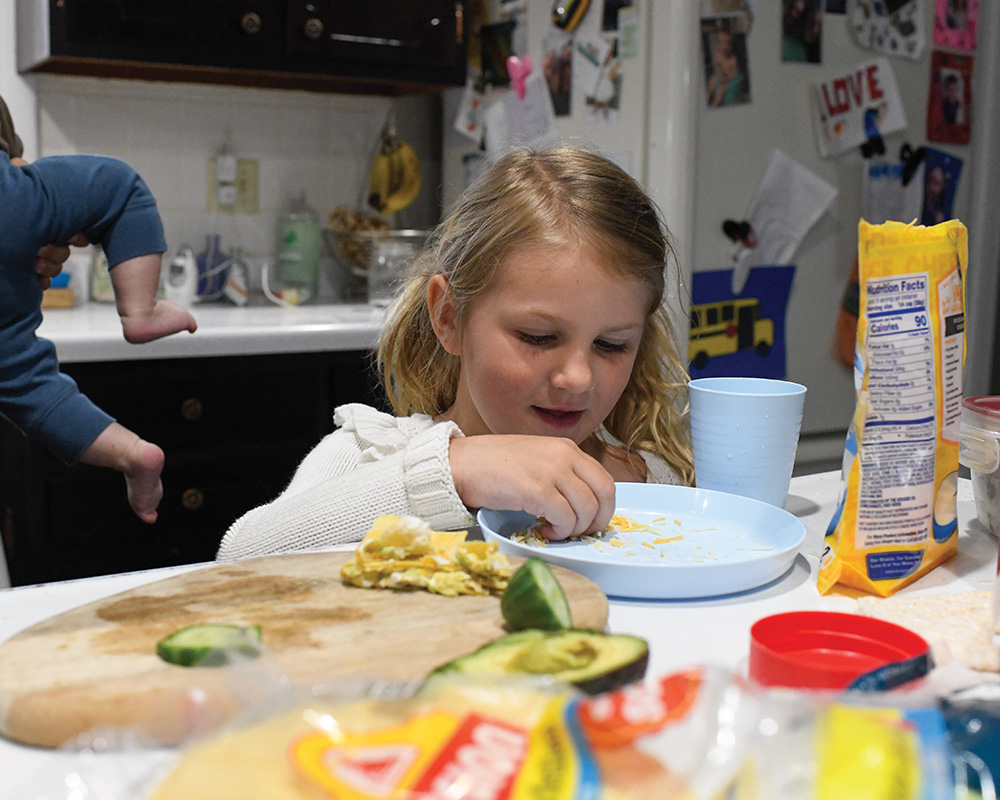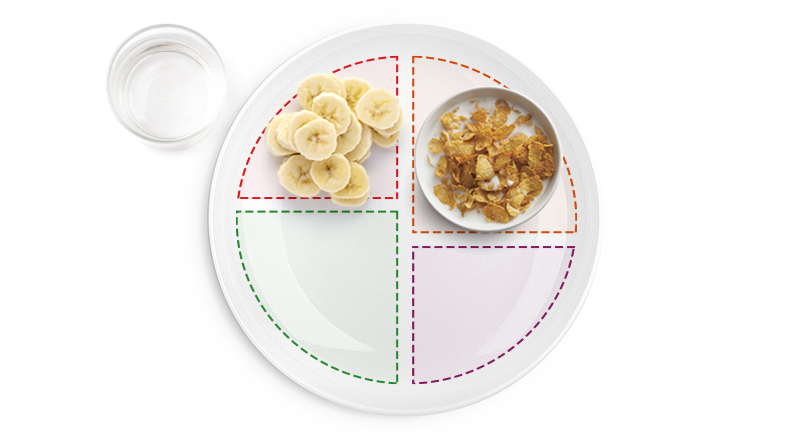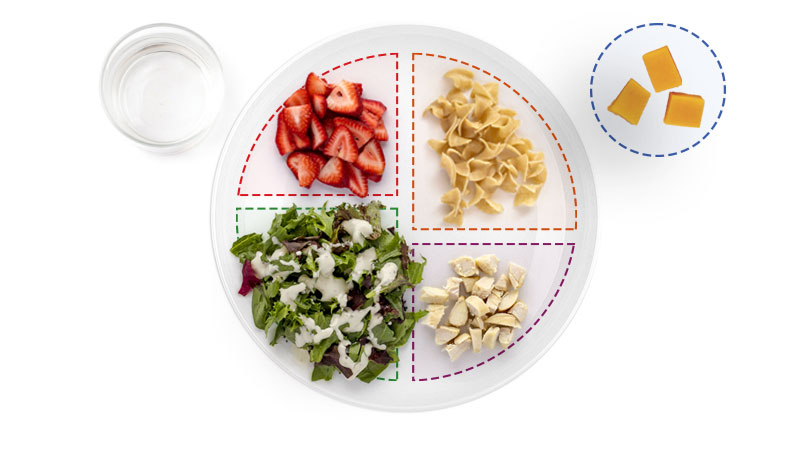h2 hide
I’m growing up strong.

Thank you for helping me learn how to stay healthy.
- Teach me how to choose healthy foods. Soon I will go to school where I must make choices. If my friends ask, I can tell them why I choose the foods I do.
- Help me learn to balance foods. If I eat ice cream, teach me to top it with fresh strawberries, not chocolate syrup.
- Let’s try a new food once a week. I can pick out a new fruit or vegetable at the store that we can prepare together.
- I want to turn off the TV and play. We can dance to the music, play catch, or take a walk (even inside). Let’s pretend. I can be a bird and flap my wings, or I can run like a horse.
Breakfast Starts My Day
It is hard to think or listen when I’m hungry. Eating breakfast gives me energy to learn. Let’s plan breakfast together. We can set the table with a box of cereal, bowls, and spoons. In the morning, we can get out the milk and fruit. Breakfast can be easy!
Here are some examples of what meal and snack portion sizes might look like on my plate.
Breakfast
h4 hide
1 small sliced banana
½ cup water

1 cup whole grain cereal
with 1 cup low-fat milk
Lunch
h4 hide
½ sliced orange
½ cup cut up cucumber
1 cup low-fat milk

1 tablespoon fruit jam
on 2 slices whole grain bread
with 2 tablespoons peanut butter
Snacks
h4 hide

½ cup diced strawberries
with ½ cup low-fat yogurt
5 small, sliced carrots
with ¼ cup chickpea hummus
2 or 3 whole grain crackers
with 1 stick string cheese, quartered lengthwise
Raisins in 1 small oatmeal cookie
water between meals and snacks
Dinner
h4 hide
½ cup large, sliced strawberries
1 cup mixed, green salad with 1 tablespoon dressing
½ cup water

½ cup cooked whole grain pasta
3 tablespoons baked, chopped chicken
2 or 3 cubes cheese
Daily Suggested Food Group Amounts
3 servings a day
1 serving = ½ cup
(1½ cups total)
Cooked or soft, raw fruit.
Mashed, sliced, or chopped.
Offer a variety: red, yellow, orange, blue, and green.
3-4 servings a day
1 serving = ½ cup
(1½ – 2 cups total)
Mashed, sliced, or chopped veggies.
Offer a variety: dark green, orange, red, yellow, and purple.
8-10 servings a day
1 serving = ½ ounce
(4-5 ounces total)
Whole grain bread, tortillas, rice, or noodles.
Dry or cooked cereal.
8-10 servings a day
1 serving = ½ ounce
(4-5 ounces total)
Whole grain bread, tortillas, rice, or noodles.
Dry or cooked cereal.
3-5 servings a day
1 serving = 1 ounce
(3-5 ounces total)
Cooked lean meat, poultry, or seafood.
Eggs.
Cooked beans, peas, or tofu.
Peanut butter.
3-5 servings a day
1 serving = 1 ounce
(3-5 ounces total)
Cooked lean meat, poultry, or seafood.
Eggs.
Cooked beans, peas, or tofu.
Peanut butter.
5 servings a day
1 serving = ½ cup
(2½ cups total)
Low-fat milk.
Yogurt.
Cheese.
Dairy
5 servings a day
1 serving = ½ cup
(2½ cups total)
Low-fat milk.
Yogurt.
Cheese.

Look what I can do!
- I can eat with a fork and spoon and wipe my mouth and hands with a napkin.
- I love to draw and make things. Let’s make a picture with the food groups on it.
- I love to read. Let’s visit the library and get some books.
- I can take turns. Let’s play follow the leader!
- I can help. I will set the table for dinner and wipe it off after we eat.
Keep me safe and healthy.
Take me to the doctor for my check-up. We can see how much I’ve grown. Visit www.cdc.gov/vaccines/schedules to see when I am due for shots.
Remind me to brush and floss my teeth every day. Take me to the dentist to get my teeth checked.
Washing our hands helps us stay healthy. We should wash them often for at least 20 seconds with warm water and soap.
I need simple rules. Set limits on when, where, and how often we have screen time. Talk about what I’m learning as we watch together, and keep me safe from what I shouldn’t see. Let’s focus on each other during meals and snacks, not a screen.
Avoid tobacco or nicotine products, alcohol, marijuana, and other illegal drug use to keep our family healthy and safe. For support with quitting tobacco or nicotine products, visit www.quitnow.net. For support with quitting alcohol or other drugs, visit www.findtreatment.gov. Your WIC Nutritionist can also provide additional resources.